A wristband which brings help
This solution is only in its infancy in Poland, but thanks to the European Funds more and more people can afford it. Telecare, because that is what we are talking about, secure the safety, comfort and health of elderly people, as well as relieve traditional care services. Half a thousand inhabitants of Częstochowa and Rybnik sub-region successfully use this modern form of senior care.
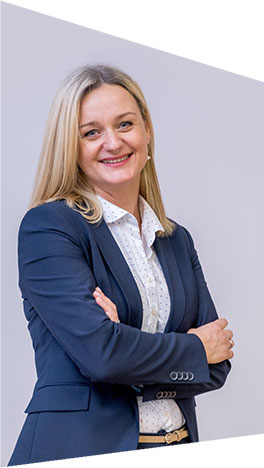
In Western European countries, telecare is a well-functioning support system for senior and vulnerable citizens. In Poland, the system has been developing relatively slowly and only started recently. In the meantime, European experience shows that it is a perfect solution, especially for those who in spite of poor health, for different reasons, remain without care.
We have been working on popularizing this model in Poland for years. By establishing cooperation with the EBI Association, we decided to offer telecare services to senior citizens living in the region. Our support included 500 individuals from Częstochowa and Rybnik sub-region.
Every participant received a special transmitter with the so called “life button” which they wear on the wrist and which, when pressed, alarms care providers at the Silesian Telecare Centre in Jastrzębie-Zdrój, which operates 24/7. When a transmitter is activated, a care provider contacts the person requesting help, identifies the reason and notifies first neighbours, then relatives who can check the situation at the spot or, if necessary, call relevant rescue services. The market does not offer a perfect solution yet, but we chose the devices which offer household noise monitoring function. They are precise and very sensitive.
The biggest problem and challenge was to convince senior citizens to new solutions. In the first place, our dependants did not hear about telecare before, in many cases they also never held a mobile phone or a tablet before. It should not be surprising then that they were full of concern and doubts. When we won their trust, the project went full stream ahead. Now, I can say that thanks to both projects we were able to help many people in different everyday and unusual situations, and help always arrived on time.
In order for the system to be effective, we started cooperation with the Silesian geriatrics coordinator Jarosław Derejczyk, MD, who trained care providers in basic diagnosis of neurodegenerative diseases, communicating with elderly people and people suffering from dementia. During our projects, senior citizens most often reported the following age and disease related problems: sudden pressure peaks, falls, haemorrhages. We also had other really serious situations like an explosion of an oxygen cylinder, a collapse of a house wall, a panic attack or even an attempted suicide which we managed to prevent thanks to effective communication and immediate reaction.
Marta Kozłowska, Project Coordinator at OPIEKANOVA Ltd.
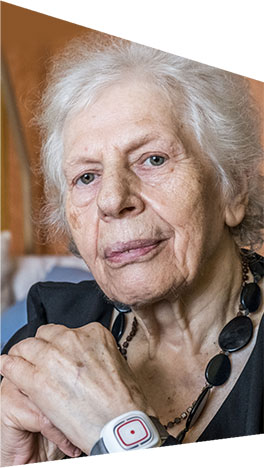
At my age, health is no longer at its best. I have been dealing with numerous health issues for a long time now, which seriously impedes my everyday life. When I was offered to benefit from telecare, I had no idea what it was. I was wondering how it was supposed to work, if I would manage. I was simply scared. I’m not really into novelties. Only when I saw how the system worked with my own eyes, did I agree to give it a try. Today, I am really satisfied with what the carers, who watch over me and help me on a daily basis, do. They wake me up, remind me about my meals, medications, insulin, appointments with doctors. Even though we do not see each other, and in fact I am still home alone, they give me a sense of safety. I know that nothing bad can happen to me. The wristband I wear has a hidden sensor, which can do a lot. For instance, if I fainted, lost consciousness or fell down, the device would immediately sense it and automatically notify paramedics, and they would quickly send me help.
Thanks to telecare, I also have more contact with people than I did before. I no longer feel so sad. I can laugh and I can chat. I sometimes talk with my carers, we make jokes. It gives me strength and makes my age bother me less. This help is really valuable – especially in the evenings and at night, because it is when I forget to take my pills most often.
Once I fell from my bed, and because I am ailing, I was not able to stand up on my own, or even to reach the telephone. I pressed the button on my wristband and one of the carers instantly got in touch with my daughter who came to lift me up and helped me quickly. The carers also arrange home health visits when I am not able to go to a medical clinic.
They also helped me get an orthopaedic bed, where I feel much more comfortable now. This kind of help is like a treasure, not only for me, also for my family. They all work and have so much to deal with. Now, they do not have to spend all day worrying that something bad can happen to me. I am safe in my own house.
Helena Pietraszkiewicz from Wodzisław Śląski, project participant
Say it the Silesian way
oma/starka – a grandmother
keta – a necklace
wachować – to look after
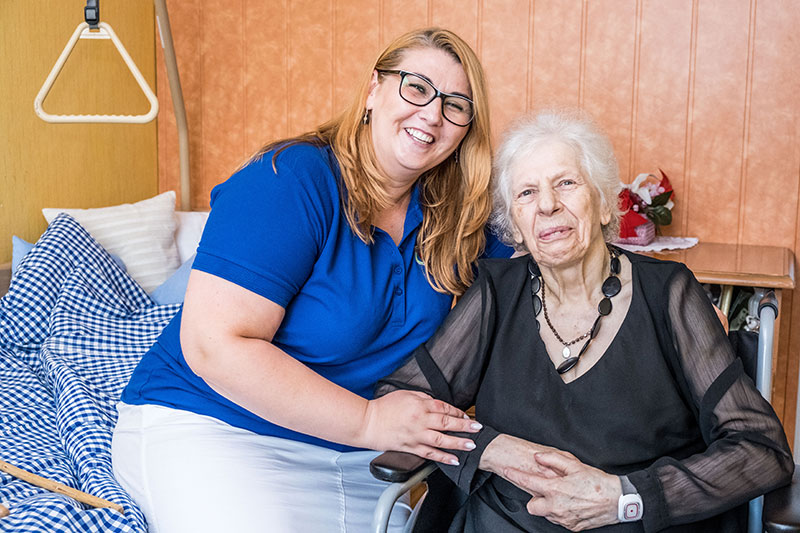
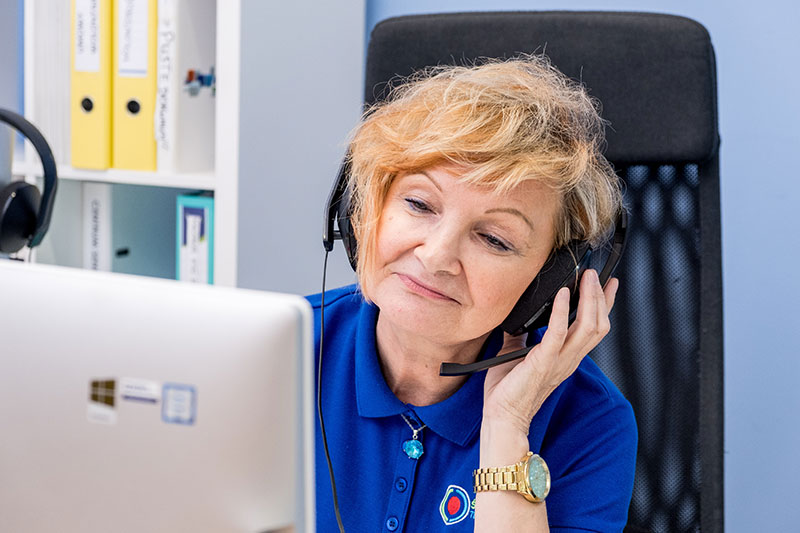


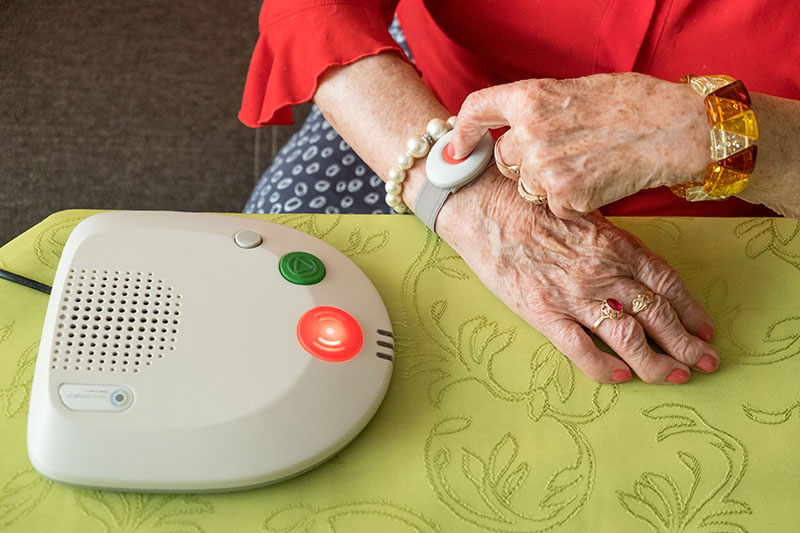


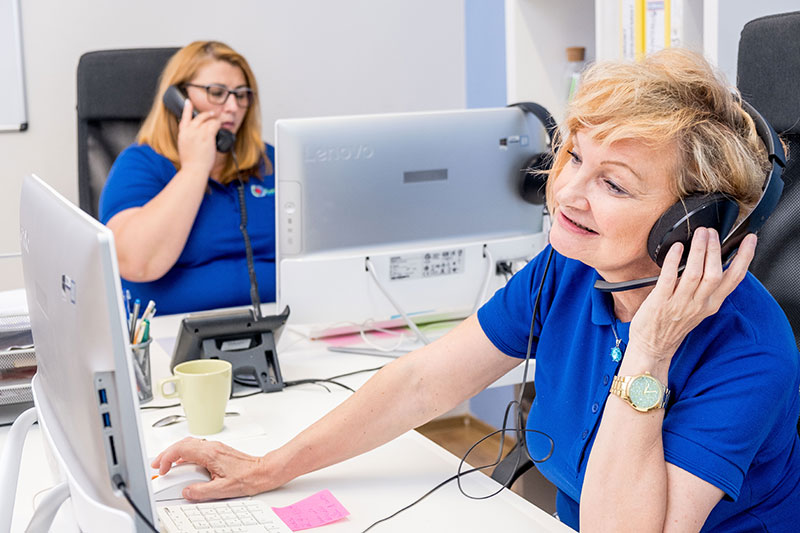

Projects
"SAFE AT HOME – modern technologies in care services for senior and vulnerable citizens from the Rybnik sub-region"
Beneficiary: EBI Association in partnership with OPIEKANOVA Ltd. and the City of Jastrzębie-Zdrój
Project amount: ca. PLN 1.5 million
ROP SV 2014-2020 subsidy: ca. PLN 1.3 million
Implementation period: 1.06.2017 – 31.05.2019
"SAFE AT HOME – telecare services in the City of Częstochowa"
Beneficiary: EBI Association in partnership with OPIEKANOVA Ltd. and the City of Częstochowa
Project amount: ca. PLN 1.4 million
ROP SV 2014-2020 subsidy: ca. PLN 1.2 million
Implementation period: 1.06.2017 – 31.05.2019
Author: Łukasz Karkoszka
Photos: Tomasz Jodłowski






